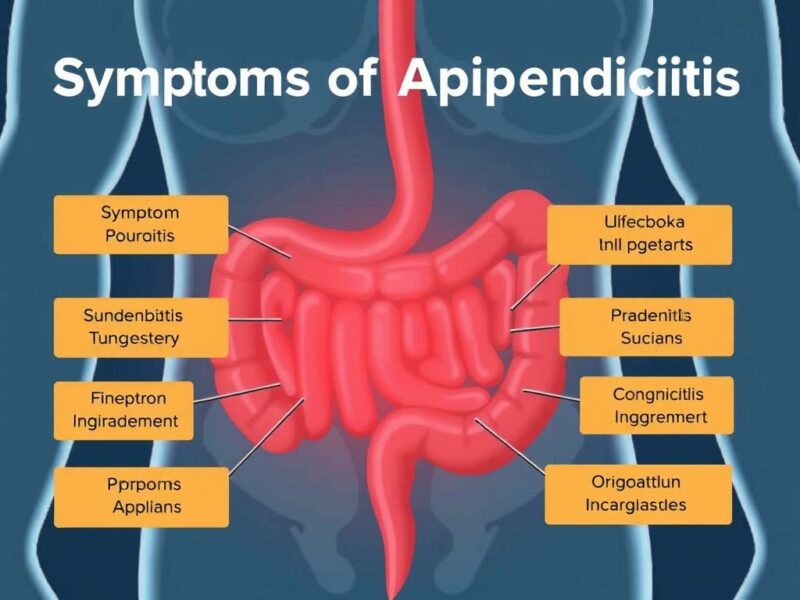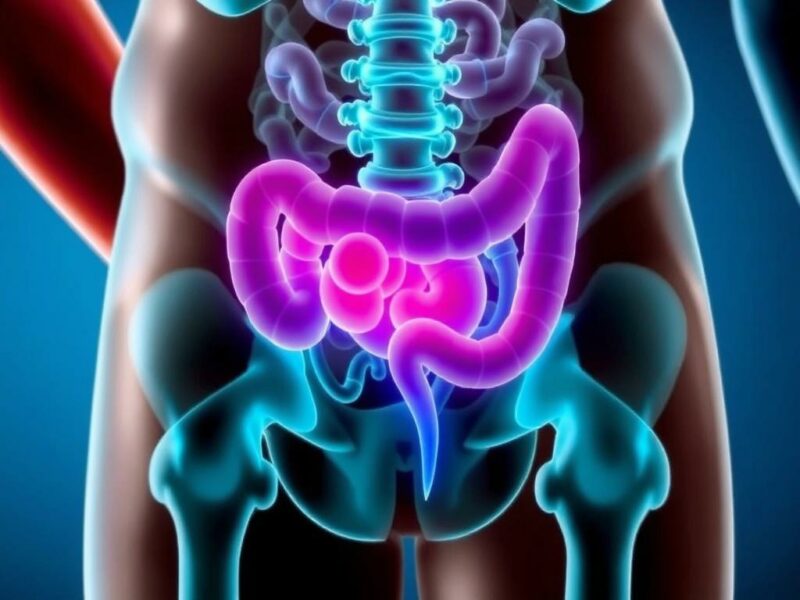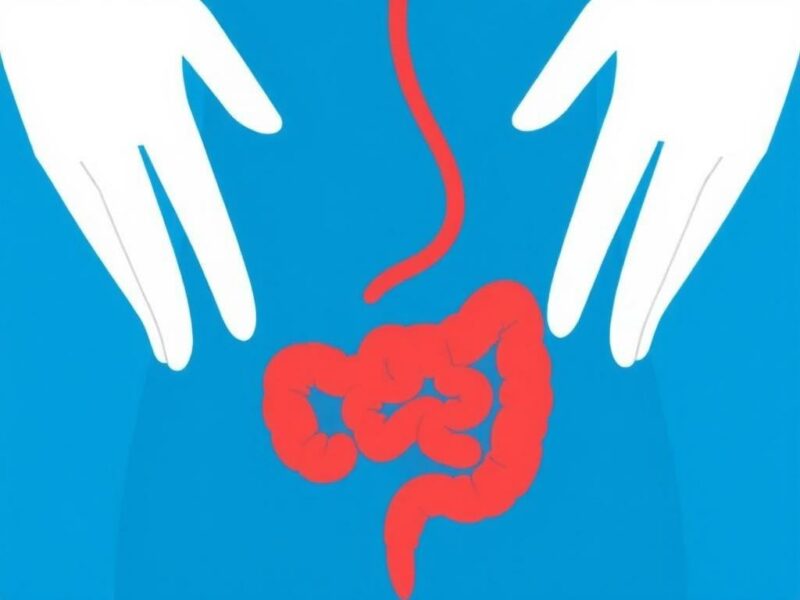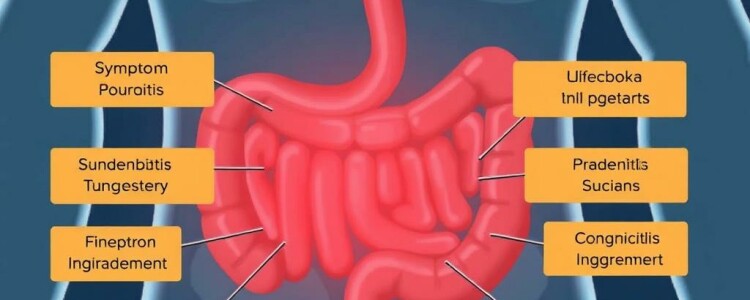Appendicitis is a common medical emergency that occurs when the appendix, a small finger-shaped pouch attached to the large intestine, becomes inflamed. Knowing the symptoms of appendicitis can be life-saving because prompt diagnosis and treatment are crucial to avoid complications such as a ruptured appendix. In this comprehensive article, we’ll explore the various symptoms of appendicitis, what causes them, and how to recognize this condition early. Whether you are a concerned parent, an adult, or just curious about your health, understanding the signs and symptoms can help you act quickly if you or someone you know might be facing this condition.
What Is Appendicitis?
Appendicitis is an inflammation of the appendix, often caused by a blockage in the appendix’s lining that leads to infection. This blockage might be the result of stool, foreign bodies, or sometimes even cancer. Once the appendix becomes inflamed, it can swell and fill with pus, causing pain and other symptoms. If left untreated, the appendix can burst, leading to a dangerous infection called peritonitis.
The first crucial step to managing appendicitis is recognizing the symptoms, which can sometimes be tricky because they may mimic other less serious conditions like indigestion or stomach flu. Let’s break down the symptoms of appendicitis into clear, understandable points.
Common Symptoms of Appendicitis
The symptoms of appendicitis often begin suddenly and worsen quickly. Although each person may experience symptoms differently, here are the most common signs to watch out for.
1. Abdominal Pain
The hallmark symptom of appendicitis is abdominal pain, which usually starts near the belly button. This pain then shifts toward the lower right side of the abdomen, where the appendix is located. The pain tends to become sharper and more severe over time. It can be described as a dull ache initially but soon transforms into intense and persistent pain.
This pain may worsen with movements such as walking, coughing, or sneezing. In some cases, people might feel pain in other areas of the abdomen, especially if the appendix is located in a different position.
2. Loss of Appetite
Another early symptom is a sudden loss of appetite. Many people with appendicitis notice they no longer feel hungry, even though their body is in pain and distress. This loss of appetite often occurs immediately after the abdominal pain begins.
3. Nausea and Vomiting
Feeling nauseated and vomiting follows commonly after the onset of abdominal pain. These symptoms can sometimes be confused with a stomach virus, but when combined with other symptoms, nausea and vomiting point toward appendicitis.
4. Fever
A low-grade fever may accompany appendicitis as the body reacts to inflammation or infection. The fever usually appears after the pain starts and may increase as the condition progresses. A fever higher than 101°F (38.3°C) could indicate that the appendix has ruptured.
5. Changes in Bowel Movements
People with appendicitis might experience constipation or diarrhea. There may also be difficulty passing gas. These digestive changes are tied to inflammation irritating the intestines.
6. Abdominal Swelling or Tenderness
Swelling in the abdomen can occur as the inflammation progresses. Tenderness, especially when pressing on the lower right side of the abdomen, is common. This area hurts more when released, a sign often checked by doctors called “rebound tenderness.”
7. Difficulty Passing Gas
Sometimes, the inflammation slows down the movement of gas through the intestines, causing bloating and discomfort.
Symptoms of Appendicitis in Children vs. Adults
Recognizing appendicitis in children can be more challenging since younger kids might find it hard to describe their pain or feelings clearly. Children often present with similar symptoms as adults, such as abdominal pain and fever, but the localization of pain might be less clear.
Key Points About Appendicitis Symptoms in Children
- Fussiness or irritability due to abdominal pain.
- Refusal to eat or drink.
- Vomiting that accompanies the pain.
- Slow movements or reluctance to walk due to pain.
Adults typically can describe the classic signs and symptoms more accurately, but even in adults, appendicitis can sometimes have atypical presentations.
Stages of Appendicitis and Symptom Progression

Appendicitis symptoms develop in stages, and understanding these stages can help you recognize the severity of the condition.
| Stage | Symptoms | Time Frame | Clinical Notes |
|---|---|---|---|
| Early Stage | Dull pain around belly button, mild nausea, loss of appetite | First 12-24 hours | Initial inflammation; symptoms may be vague |
| Progression | Sharp pain shifting to lower right abdomen, vomiting, mild fever | 12-48 hours | Inflammation worsens; pain becomes localized |
| Advanced Stage | High fever, severe pain, abdominal swelling, possible diarrhea or constipation | Beyond 48 hours | Risk of rupture increases; urgent medical care needed |
| Ruptured Appendix | Sudden relief of pain followed by severe abdominal pain, high fever, shock symptoms | Variable | Life-threatening; requires emergency surgery |
When to See a Doctor: Recognizing Serious Warning Signs

If you experience abdominal pain that worsens over several hours and suspect appendicitis, it’s essential to get medical help immediately. Certain red flags mean you should seek urgent care:
- Severe and persistent pain in the lower right abdomen
- Fever above 101°F (38.3°C)
- Inability to keep food or fluids down due to vomiting
- Sudden relief of pain followed by worsening, which may indicate a ruptured appendix
- Signs of shock such as rapid heartbeat, fainting, or confusion
Early diagnosis can prevent complications, so don’t delay if symptoms match.
Other Conditions That Mimic Appendicitis Symptoms
Appendicitis symptoms can be confusing because other medical conditions cause similar signs. It’s important for healthcare professionals to differentiate appendicitis from issues such as:
- Gastroenteritis: Causes nausea, vomiting, diarrhea, and abdominal cramping.
- Kidney stones: Cause severe flank or abdominal pain.
- Ovarian cysts or pelvic inflammatory disease (in women): Can cause lower abdominal pain.
- Urinary tract infections: Cause abdominal discomfort and sometimes fever.
- Constipation or indigestion: Can cause abdominal pain but usually without fever.
Understanding the subtle differences can help ensure timely and accurate medical care.
How Appendicitis Is Diagnosed
Doctors rely on a combination of symptoms description, physical examination, and diagnostic tests. Often, when symptoms of appendicitis are suspected, doctors perform:
- Physical exam: Check for tenderness or rebound tenderness in the lower right abdomen.
- Blood tests: To look for signs of infection such as elevated white blood cell count.
- Urine tests: To rule out urinary tract infections.
- Imaging: Ultrasound or CT scans to confirm inflammation of the appendix.
Since symptoms can overlap with other conditions, these tests provide more certainty for diagnosis.
Preventing Appendicitis and What You Can Do

While there is no guaranteed way to prevent appendicitis, some evidence suggests that a diet rich in fiber, fruits, and vegetables can promote healthy digestion and reduce the risk of blockages. Staying hydrated and maintaining a healthy lifestyle also support overall digestive health.
If you do develop symptoms of appendicitis, it is critical to avoid self-medicating with painkillers or laxatives as these can mask symptoms and delay diagnosis. Instead, seek prompt medical attention to get appropriate care.
The Importance of Early Treatment
Appendicitis requires surgical removal of the appendix, typically through a procedure known as an appendectomy. Early treatment reduces the risk of rupture and improves recovery times. In some situations, antibiotics alone may be used initially, but this depends on the severity of the inflammation.
Because the symptoms can escalate quickly, understanding them aids in faster recognition, timely intervention, and better outcomes.
Conclusion
Knowing the symptoms of appendicitis is vital because this condition can progress rapidly from mild discomfort to a life-threatening emergency. The key signs include abdominal pain that shifts to the lower right side, loss of appetite, nausea, vomiting, and fever. These symptoms vary among individuals but typically worsen over a short period. Recognizing changes in bowel habits and abdominal tenderness can also provide important clues. Since several conditions share similar symptoms, medical evaluation, including physical examination and imaging, is essential for accurate diagnosis. Acting promptly by seeking professional care can prevent complications like rupture, ensuring a safer recovery. If you or someone around you shows signs of appendicitis, especially severe and persistent pain with fever and vomiting, don’t hesitate to get emergency medical help—the earlier, the better. Staying informed and responsive to these symptoms can truly save lives.



